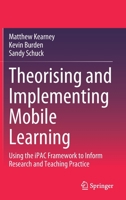Oracle Database 12c Oracle RMAN Backup and Recovery
Select Format
Select Condition 
Book Overview
This authoritative Oracle Press resource on RMAN has been thoroughly revised to cover every new feature, offering the most up-to-date information
This fully updated volume lays out the easiest, fastest, and most effective methods of deploying RMAN in Oracle Database environments of any size. Keeping with previous editions, this book teaches computing professionals at all skill levels how to fully leverage every powerful RMAN tool and protect mission-critical data.
Oracle Database 12c RMAN Backup and Recovery explains how to generate reliable archives and carry out successful system restores. You will learn to work from the command line or GUI, automate the database backup process, perform Oracle Flashback recoveries, and deploy third-party administration utilities. The book features full details on cloud computing, report generation, performance tuning, and security.
Offers up-to-date coverage of Oracle Database 12c new features Examples and workshops throughout walk you through important RMAN operationsFormat:Paperback
Language:English
ISBN:007184743X
ISBN13:9780071847438
Release Date:March 2016
Publisher:McGraw-Hill Companies
Length:768 Pages
Weight:2.45 lbs.
Dimensions:1.6" x 7.3" x 9.0"
More by Matthew Kearney
Customer Reviews
5 customer ratings | 5 reviews
There are currently no reviews. Be the first to review this work.
























